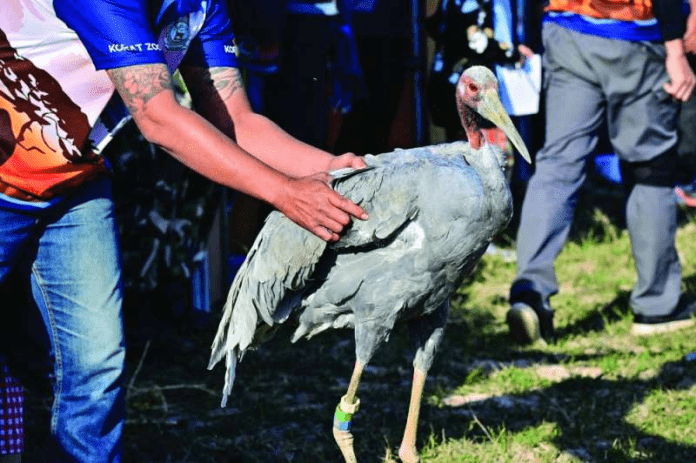At sunrise on Christmas morning, 13 Sarus cranes from Southeast Asia were released into the waters of a Thai lake in a rare attempt to bring the endangered species back to life.
These large, non-migratory birds were on the verge of extinction some 50 years ago and existed in small numbers in captivity, reports a local Arabic daily quoting AFP.
The first successful reintroduction into the wild took place in 2011, and since then more than 140 birds have been returned to their natural habitat in Buriram district in the north-east of Thailand.
“This is the only place where the Thai Sarus cranes can live and breed on their own,” said Governor Chaewat Chunterapong after the animals’ release.
The birds were transported in special enclosures from Nakhon Ratchasima Zoo to Huai Churakhi Mak Reservoir.
The thirteen birds, recognizable by their unique red feathers covering their heads, were released simultaneously, flapping their wings in front of amazed spectators who had come specially to watch them.
The success rate of the operation is satisfactory, as 60 percent to 70 percent of them survive after its launch. Each bird is chipped and tagged before release, allowing researchers to track it and improve conservation efforts.
Besides breeding and releasing birds, an important part of the program is to educate residents of neighboring areas about the species and the local environment.
The choice of Hawai Churakhi Mak Reservoir is partly because it is a natural breeding site for the chestnut bonyon bulb, which is an important food source for Sarus cranes during the dry season.
But its habitat was threatened by “large-scale agricultural invasion,” the director of the Nakhon Ratchasimathanachon Kensing Zoo told AFP.

















